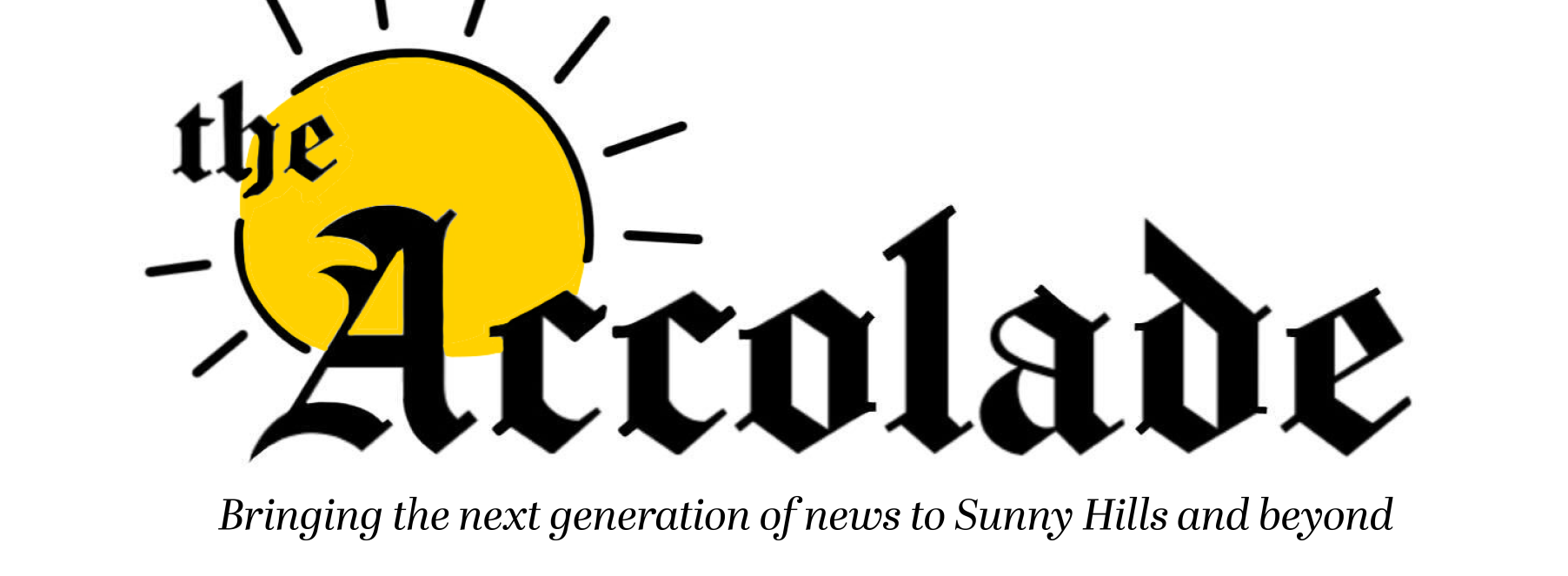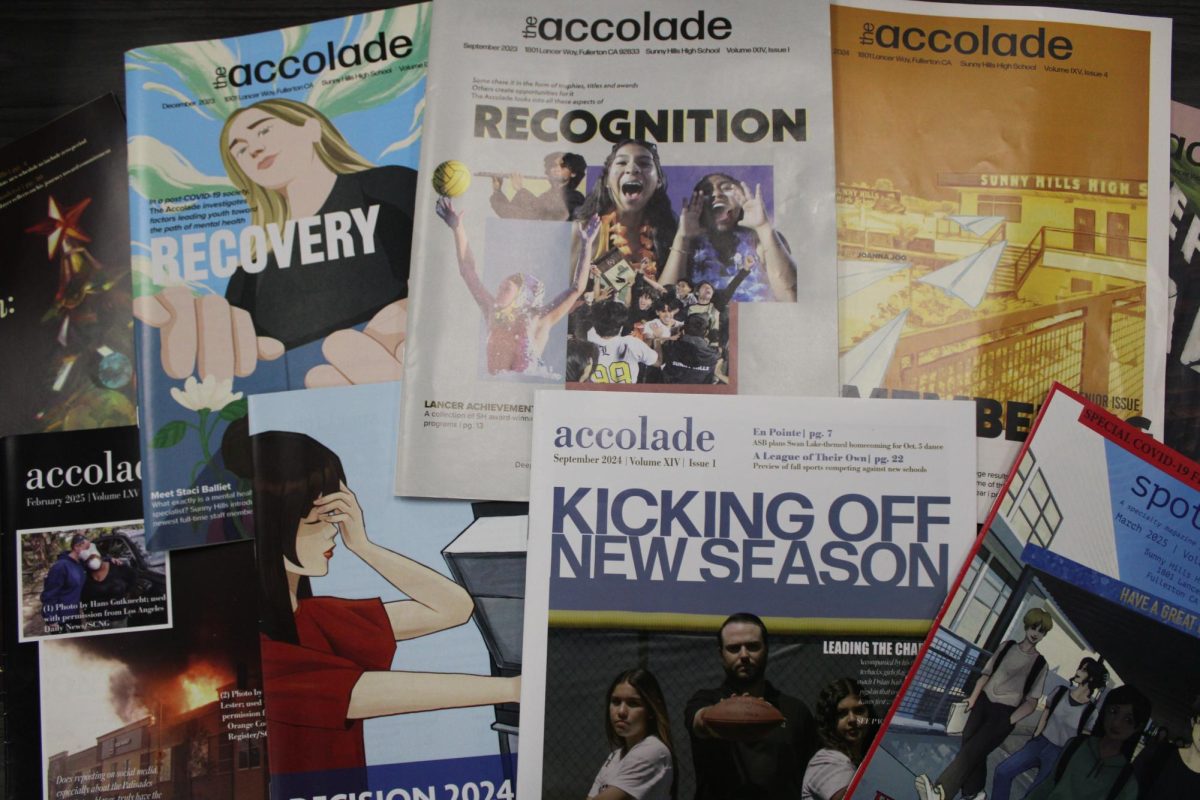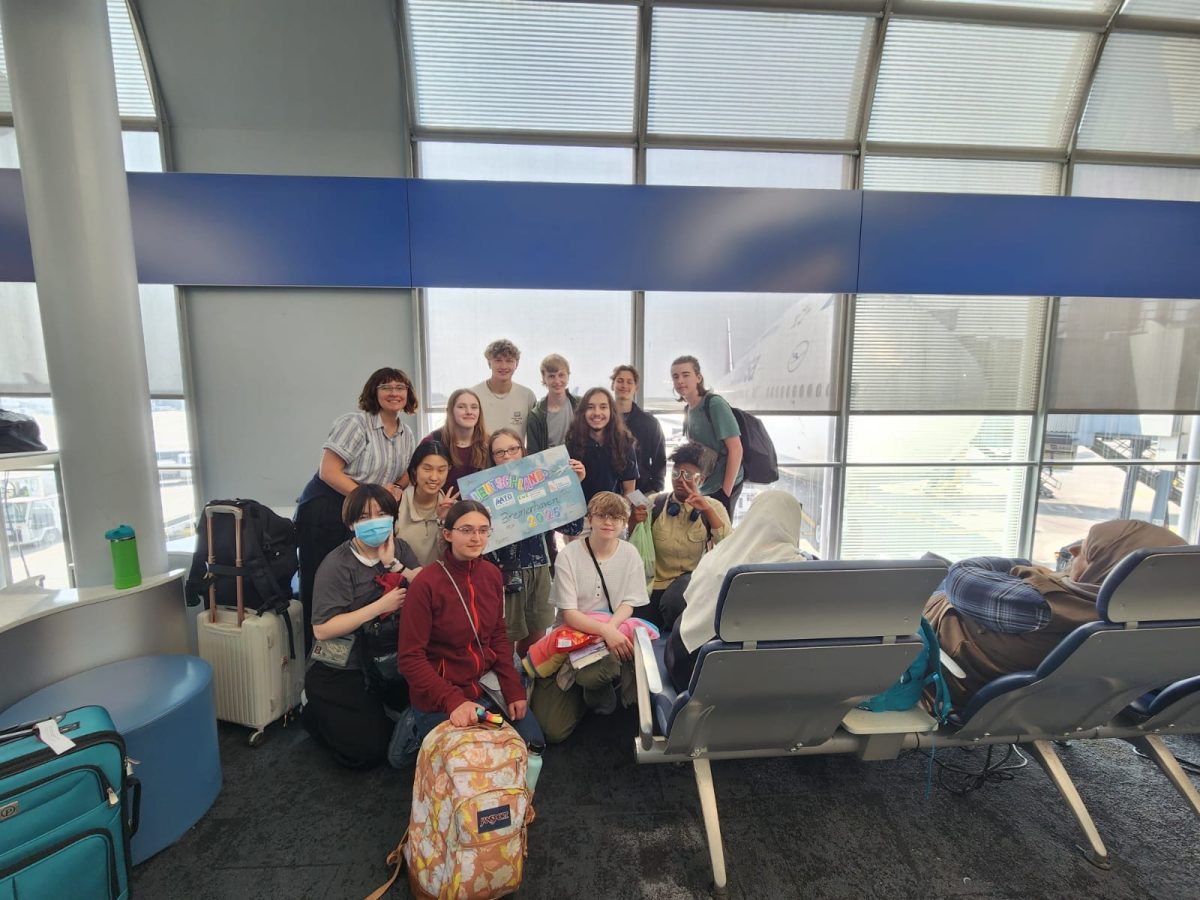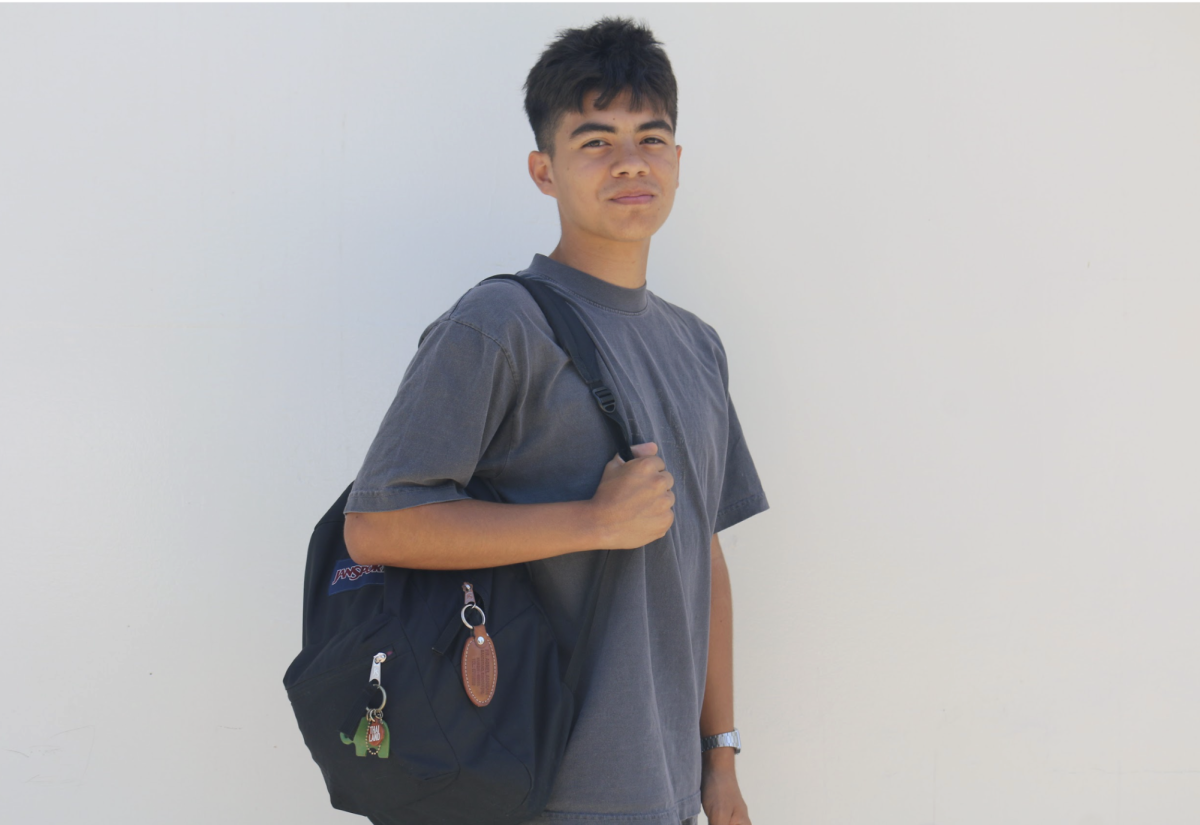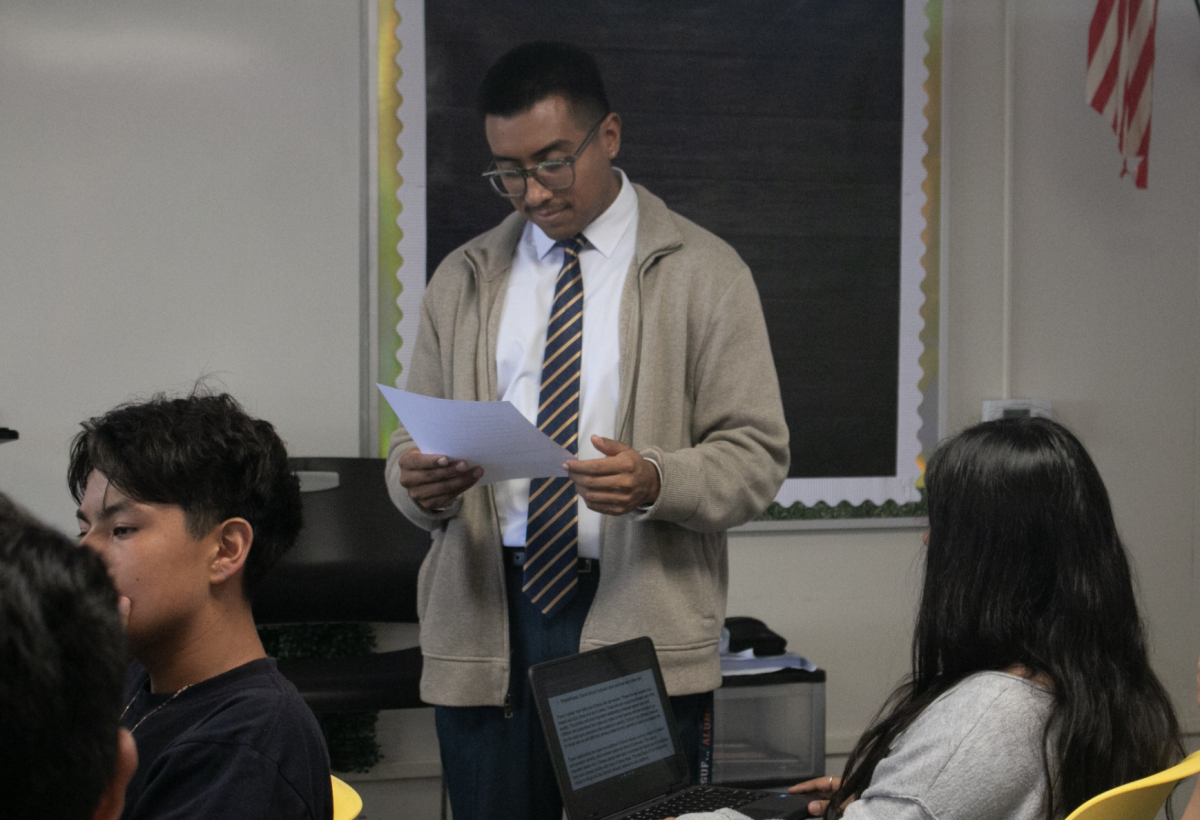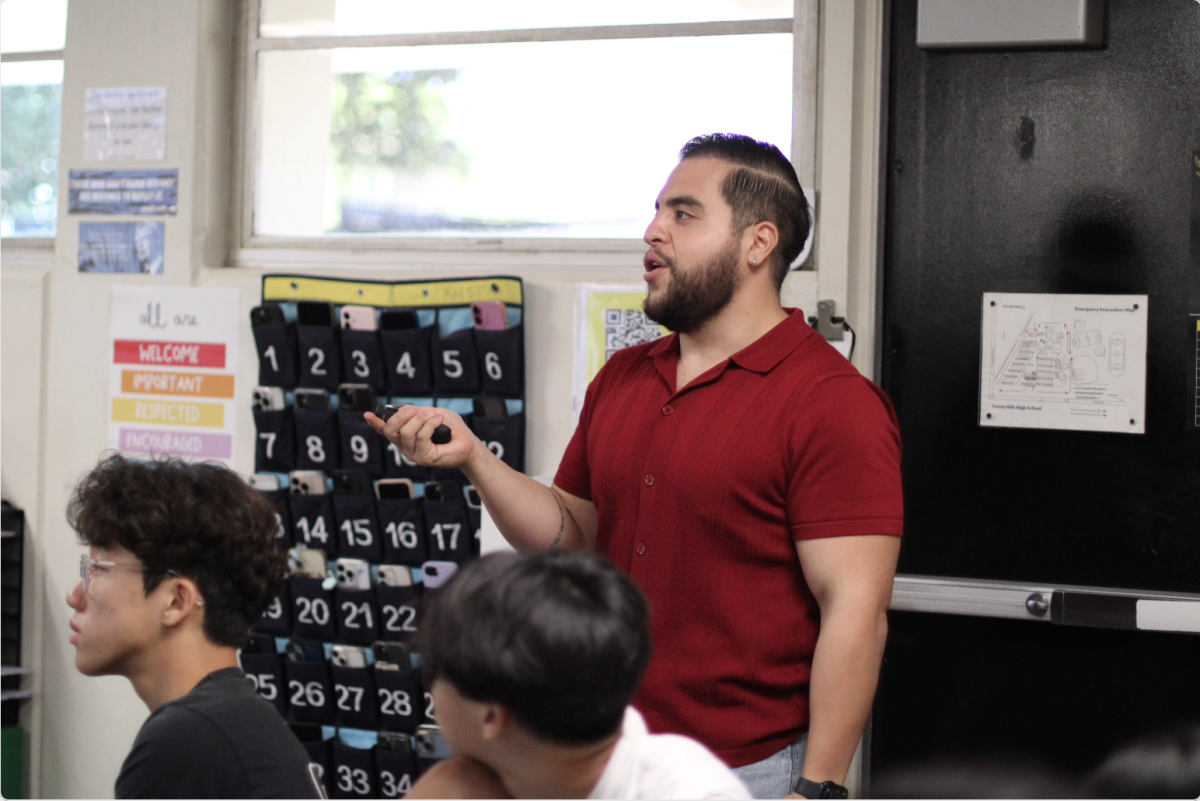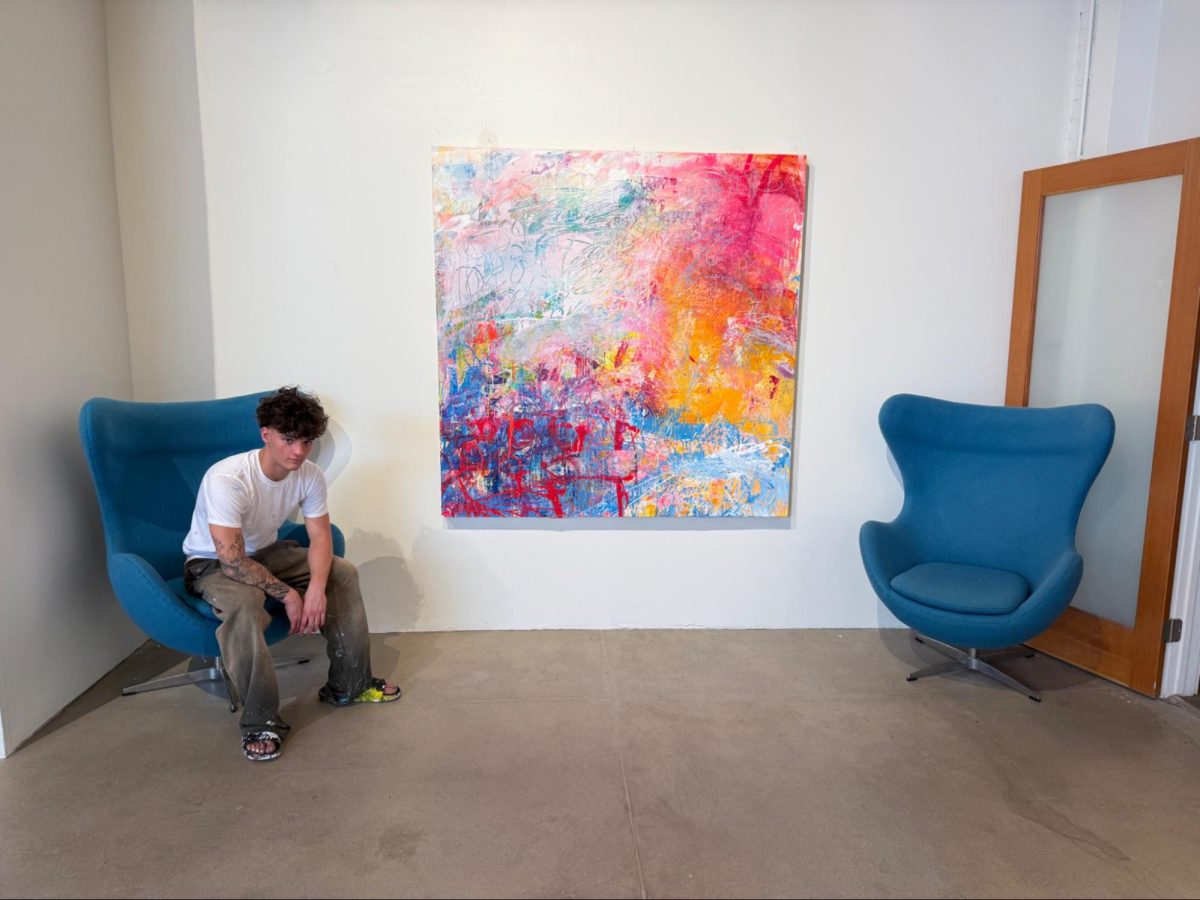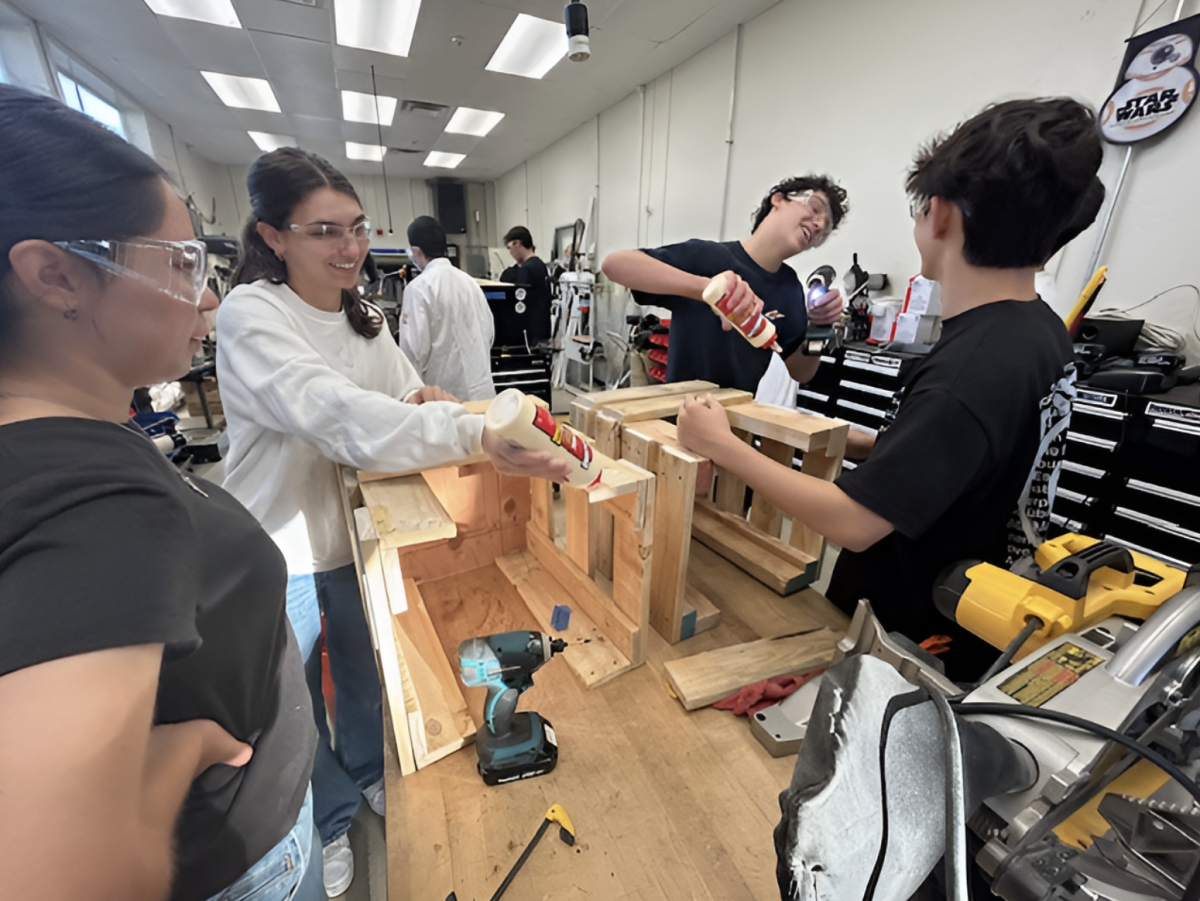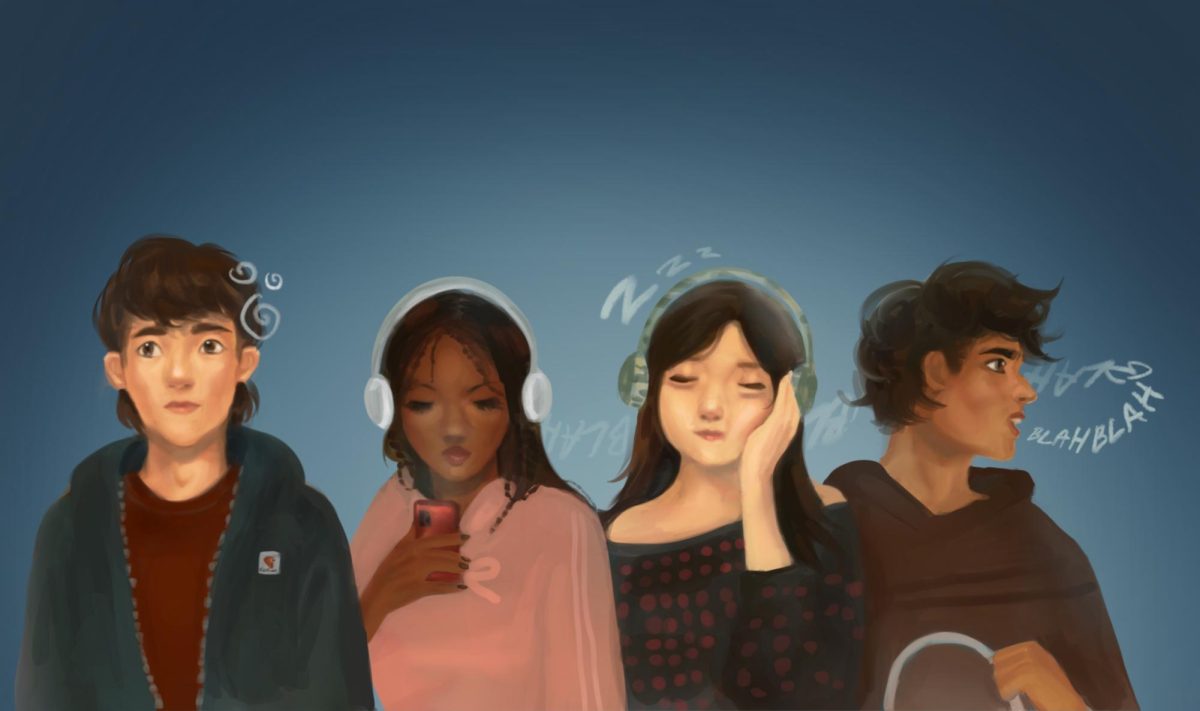As a continuing feature, The Accolade delves into the origins of Sunny Hills culture or landmarks. This time, we take a look at our own program. We send staff reporter and social media team member sophomore Alice Chae to report on how much it costs to print The Accolade magazines — the 32- and 16-page editions.
Nearly $3,700. That’s the cost Simi Valley’s Print Now 365 charges to print 1,500 copies of a 32-page color magazine with glossy pages. For 1,000 copies of a 16-pager, the printer charges nearly $2,500.
That means each of the former costs $2.47, the same price for a McDonald’s Mini McFlurry with OREO Cookies, a pack of Sour Punch Mini Bites Candy Assorted Flavors at Target or a Chicken Enchilada Burrito from Taco Bell.
“Students may wonder why we don’t print enough magazines for all 2,329 or so students we have on our campus,” Accolade adviser and English teacher Tommy Li said. “And the reason for that is the cost could nearly double, and I don’t know if we’ll ever be able to afford to pay for that many more issues beyond 1,500.”
In fact, according to the printing company that prints The Accolade, 2,300 32-page magazines would cost $4200, before taxes, while 2,400 32-page issues would cost $4290.
Though most students are oblivious to such costs, the adviser said it’s important for people on campus to know so they can see The Accolade magazines’ value.
“I always tell my English students that our magazine is like a mini-yearbook,” said Li, who has advised the school’s journalism program for nearly 15 years. “The only difference is that it’s for free; where else can you see in print color pictures of your friends or peers here but never have to pay a single dime to get one?”
A key concern is if school officials see that few students pick up the stack of Accolade products, then they could choose to question the need to spend so much money on them.
“I’m not going to guarantee it, but I can say most likely we’re going to get a lot more pushback from the administration about how much money they’re going to spend on our budget,” Li said. “That is why we decided to have the staff write so many ‘DID YOU KNOW’ pieces about our program, how long we’ve been in existence, how many local, regional and national awards we’ve won and how much time and effort it takes for my staff to get pages done to send to our printer.”
IT ALL COMES DOWN TO MONEY
Since the issues aren’t sold for profit, Li said The Accolade’s sole money source is the $8,500 annual budget that comes from the Associated Student Body [ASB]. That amount wasn’t always the same.
“When I first was hired here in 2001, the annual budget we got was $5,000, but that was to help us in paying for the cost of print newspapers,” he said. “Then in the fall of 2020 after the COVID-19 pandemic hit, we lost $1,500 for the first time because the ASB wasn’t able to collect as much money from selling Gold Cards and tickets to sporting events like football games.”
That reduction lasted until the 2022-2023 school year when then-assistant principal Hilda Arredondo agreed to increase Accolade’s funding from $3,500 to $6,500, which would help pay for the eight newspaper editions Li and his student editors had planned to produce.
And the $6,500 went up as high as $10,000 for the following school year after student editors agreed with Li to switch media — from newspapers to news magazines.
“The decision to transition was a part of understanding our readership and adapting to the changing preferences of the readers,” then-editor-in-chief and Class of 2024 graduate Jaimie Chun said. “I also felt very determined and ambitious to lead this change for Accolade as a program.”
Chun said the program not having enough money beyond two magazine editions was a dilemma.
“To create an in-depth and comprehensive issue, I wanted to maximize the number of pages included in each issue but that would cost more money, so we ended up cutting the number of issues we would print,” she said. “When we saw that issues were still being left over in classes, we gradually cut the number of issues we printed to manage the budget.”
Despite the bump in funding, the journalism program was expected to raise at least $1,500 to give back to the ASB’s general budget.
“That meant we actually started at $8,500, and we had to do quite a bit of fundraising from restaurant outings to solicitation of parent support to give back $1,500 to the ASB,” Li said.
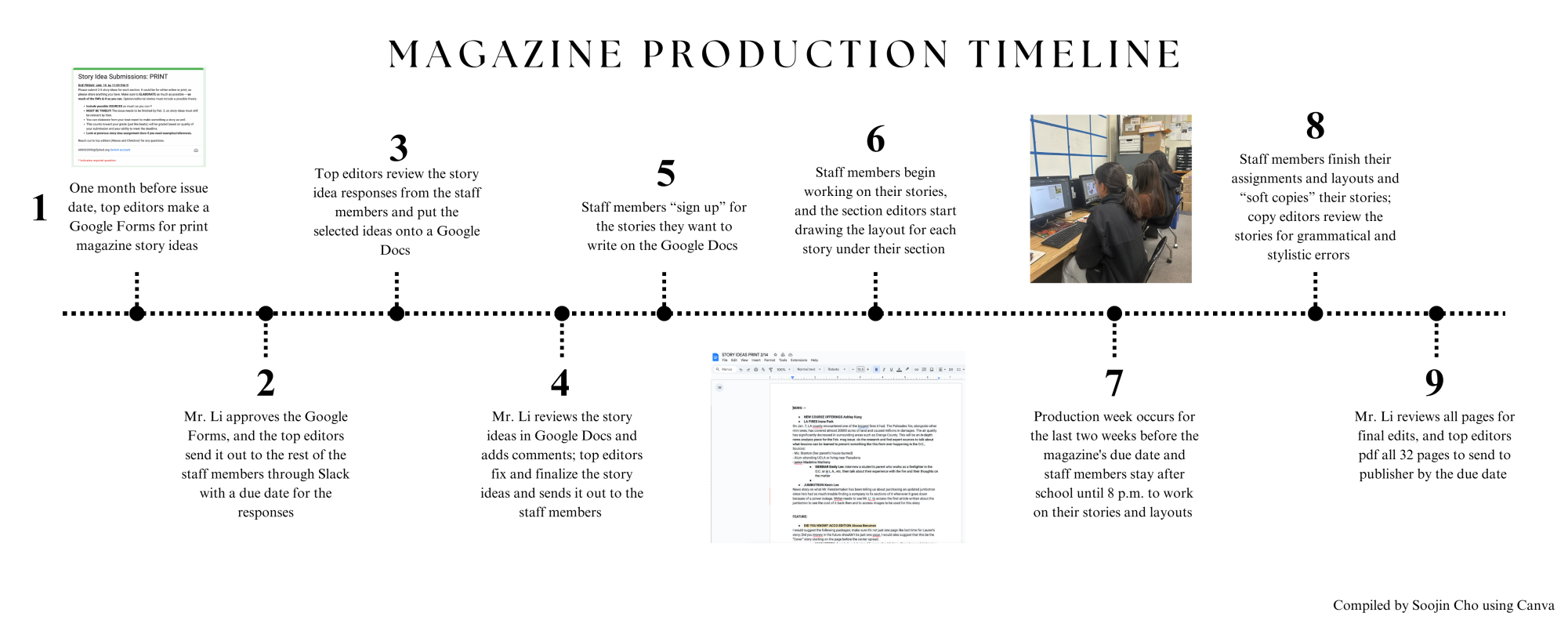 IT ALSO COMES DOWN TO STUDENT READERSHIP
IT ALSO COMES DOWN TO STUDENT READERSHIP
Because students are oblivious to how much it costs to produce anywhere between 1,000-1,500 issues of a magazine, some take it for granted and may never pick up that’s for.
“After seeing how much more money it takes to actually make the magazines, it makes me appreciate it more as the cost is much more than I expected,” said sophomore Travis Mccovery, who guessed the printing price at $700.
Mccovery said he is willing to pick up and read a magazine but does not think others would do the same if they heard the price.
Initially unaware of the total, senior Luke Corrales said he feels bad because he usually does not read the magazines.
“I have read the first issue, ‘KICKING OFF NEW SEASON,’ and put it down because I just lost interest,” said Corrales, who would like to see trending topics from TikTok and incorporate them into future issues or put a comic in the magazines. “I would have kept reading if there was a story that involved things about specific classes or school clubs.”
Junior Jake Sexton said he feels $3,000 is a large amount of money to spend on printing the issues and therefore it’s a steal that the students get them for free. Sexton also said he usually takes a look at each magazine, reading what is relevant or relatable to him.
“I would like to see more sports and maybe more details on performances of athletes,” Sexton said. “I’m biased because I’m an athlete myself, so most of my interests are in sports.”
Sophomore Niveen Hassan said she sees the magazines similar to yearbooks.
“If I pick up a magazine, I typically just flip through it to look at the pictures,” said Hassan, who expected the price of publishing to be high.
Sophomore Francis De Guzman said reverting back to newspapers is the way to go.
“I’d say go back to newspapers to save money, but I do like the idea of printing because having an issue in-person as a student is definitely a better and more interactive experience than just reading an online article,” said De Guzman, who guessed it cost $1 per magazine. “It feels like we read so many online articles for school already, so just having it only online would push kids away from reading the magazines in general.”
Still, print versions of The Accolade’s work are crucial for connecting with students on campus, Hassan said.
“I know a lot of people who enjoy getting their copies and looking through them with their friends,” said the sophomore, who developed a new appreciation for the print issues after being told the cost. “It’s important to have a school newspaper that people can bond over.”

